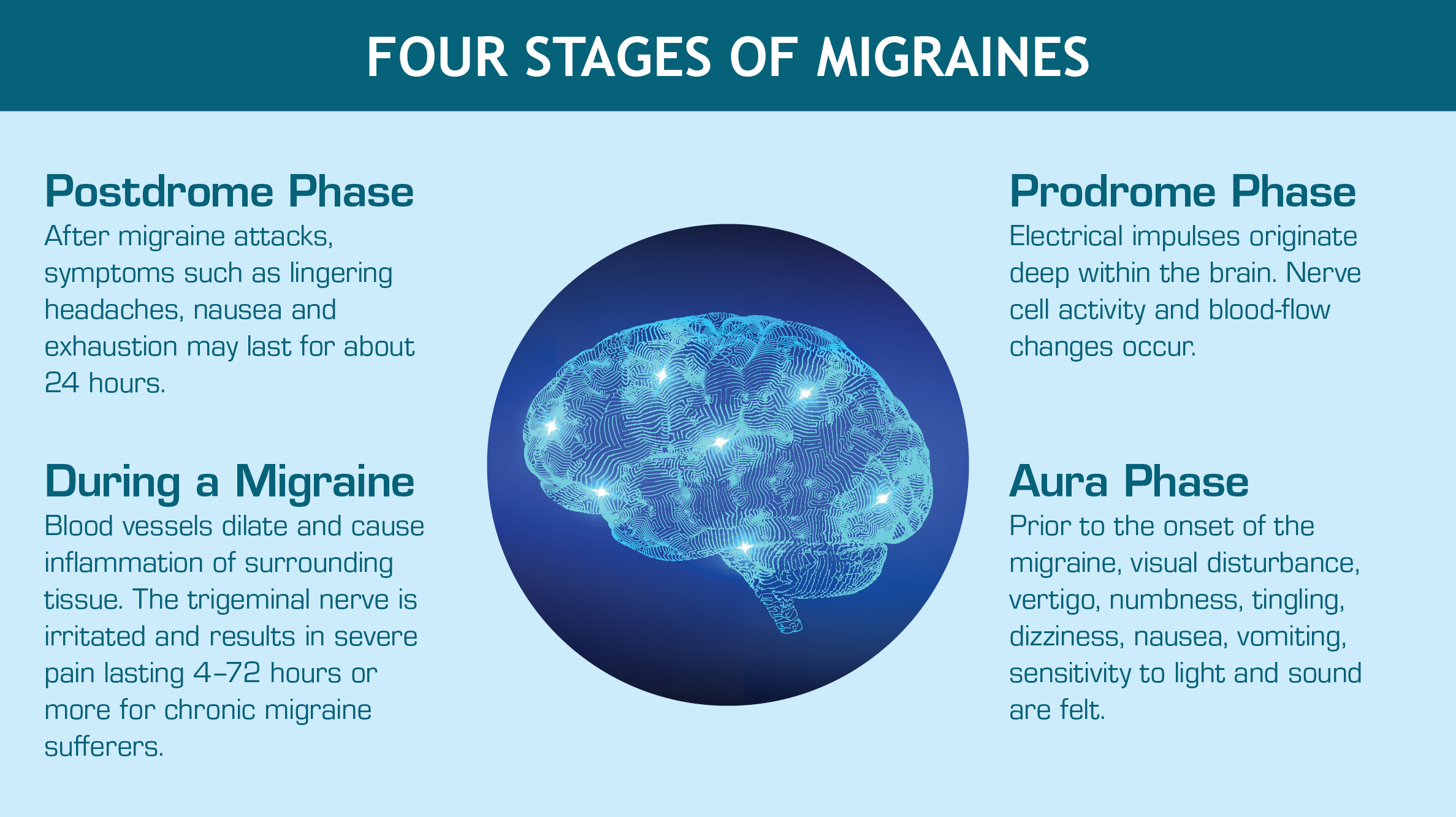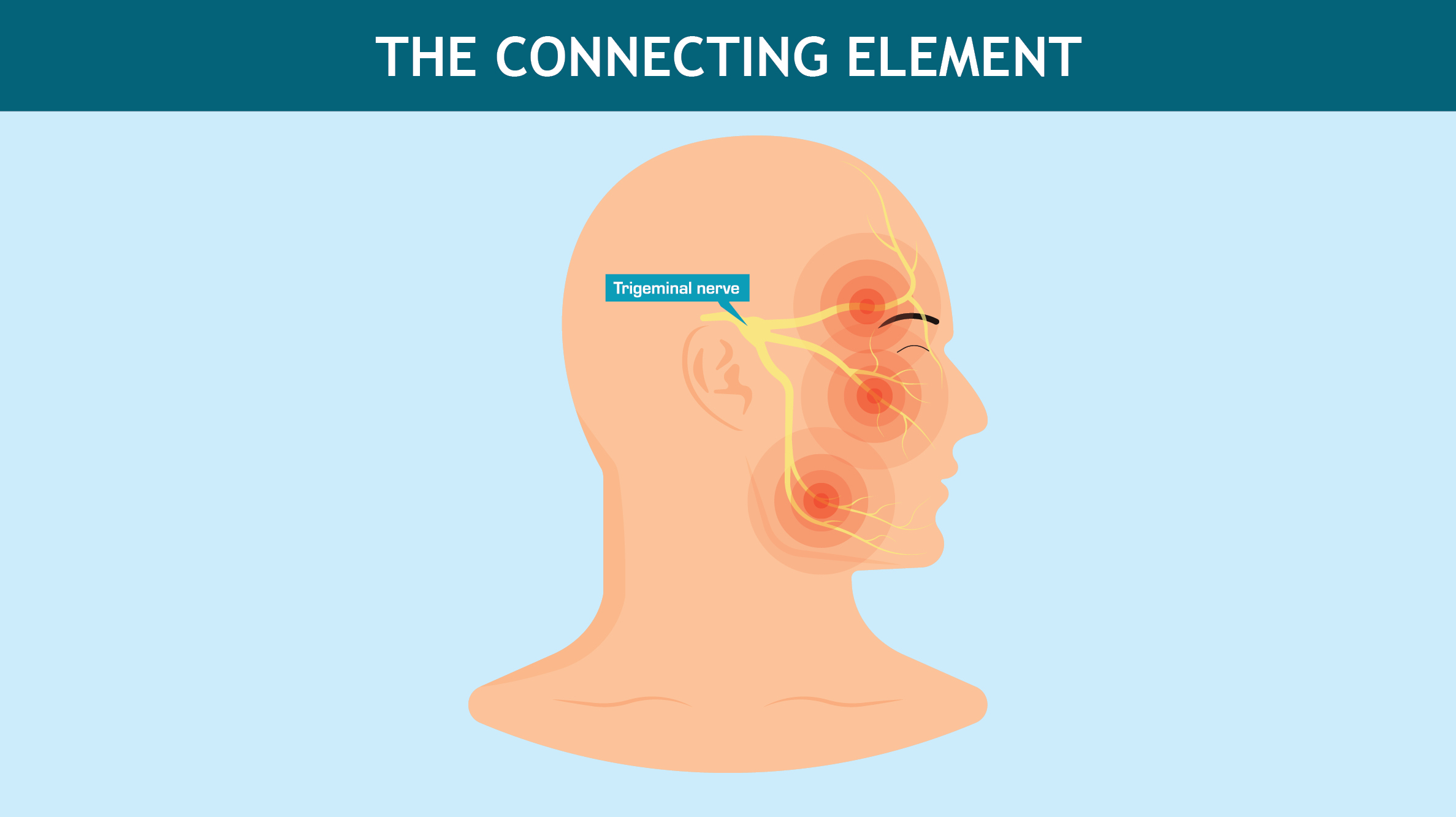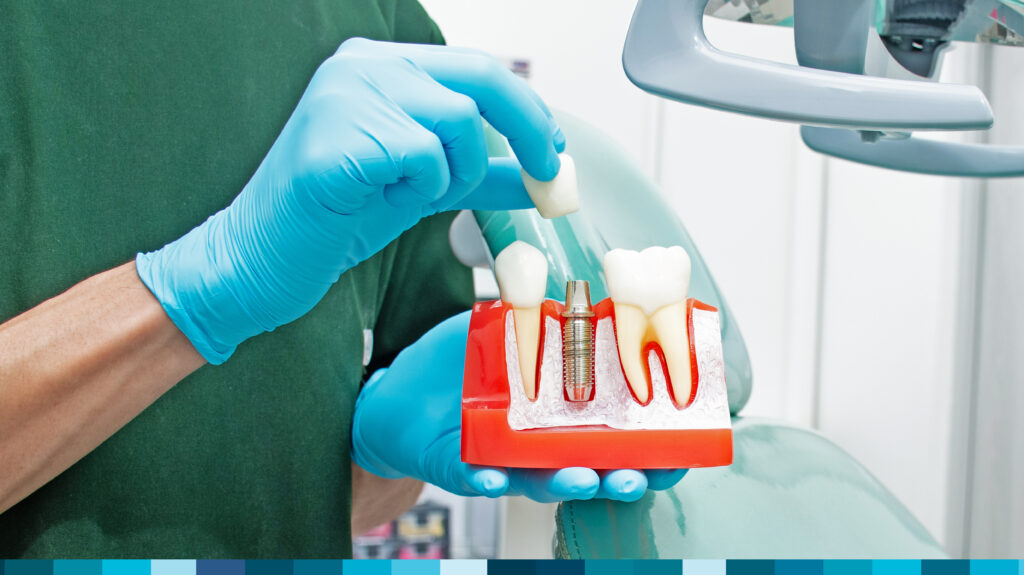The connecting element between migraines and the temporomandibular joint (TMJ) is the fifth cranial nerve, called the trigeminal nerve. The primary function of the trigeminal nerve is to provide sensation to the face, jaw and forehead region. However, the nerve also gives sensation to the covering of the brain and intracranial arteries. This common innervation by the trigeminal nerve is the physical basis for the connection between migraines and TMJ disorders.
Migraine Symptoms
Migraine headaches are typically experienced as a pounding, throbbing or pulsating sensation. It is common for a migraine patient to also experience nausea, vomiting, and sensitivity to light and sound. Because of these severe symptoms, migraines can be debilitating to those who suffer from them.
Migraines are unique in that they are typically experienced in defined stages. According to a 2021 Mayo Clinic article, there are several different migraine stages:
Prodrome Stage
- Occurs one to two days before the migraine event
- Changes in mood, urination frequency or intestinal behavior
- Neck stiffness
Aura Stage
- Can occur before or during a migraine event
- Visual or auditory disturbances
- Uncontrollable movements, weakness or numbness
Migraine Headache Stage
- Symptoms can last from four to 72 hours
- Pounding, throbbing or pulsing pain, usually on one side of the head
- Severe sensitivity to light and sound, often causing nausea or vomiting
Postdrome Stage
- Occurs 24 hours after the migraine event
- Feelings of exhaustion, confusion or relief

Migraine Causes
While the causes of migraine headaches are complex and not fully understood, research suggests there is a hereditary component to migraines. Particular attention is being placed on the “soup” of chemical mediators that accumulate during a migraine. These neurochemicals cause inflammation, dilation of brain blood vessels and nerve sensitization. It was previously thought that blood vessel dilation was the primary cause of migraines, but it is now believed to be only a secondary effect.
Above all, a migraine patient’s brain is one that exhibits hyperexcitability, making nerve sensitization the true origin of migraines. Nerve sensitization is a two-way relationship. Nerves located on the face and neck can sensitize brain neurons, which leads to headache symptoms like peripheral sensitization. Headaches can also cause peripheral nerve sensitization, which leads to abnormal skin sensitivity and muscle pain in the scalp, face and neck. This is called central sensitization.
The Connection Between Migraines and TMJ Pain
The connection between TMJ disorders and migraines is complex and bidirectional. People with migraines often have jaw pain, and people with TMJ disorders often suffer from migraines. In order to better understand this complex connection, there are a few simple facts to keep in mind:
- Migraines are an independent predictor of TMJ disorders.
- Migraine frequency and intensity increase in people with increased TMJ pain.
- TMJ disorders are a risk factor for developing migraines.
- Migraines are a risk factor for developing TMJ disorders.
- Treating migraines can reduce TMJ pain.
- Treating TMJ pain can reduce migraines.
- Depression, anxiety and stress are risk factors for both migraines and TMJ disorders.
An increase in TMJ pain can lead to an increase in migraine frequency and intensity.
The trigeminal nerve complex is the common physical connection between migraines and TMJ disorders. The first branch of the trigeminal nerve surrounds the brain covering and arteries. The third branch relays sensory input from the face, jaw, neck and forehead. Both branches converge in the brainstem, where they share common connections to other parts of the brain responsible for pain modulation. This is the physical basis for the conversion of both conditions. It also explains the bidirectional nature of the condition, featuring both central and peripheral sensitization.
Migraine and TMJ Pain Relief
The literature supports the idea that treating TMJ pain helps alleviate migraine headaches. The best way to achieve jaw pain relief is through a multimodal strategy. This can include a combination of jaw rest, thermal therapy, physical therapy, behavioral therapy and oral splinting.

As dentists, we can utilize oral splinting as a way to get patients out of pain and also grow our practice. The use of an anterior disclusion device like the NTI-tss Plus or the NTI OmniSplint can relax tense jaw muscles and prevent migraines from happening. Because the NTI devices keep the posterior teeth out of occlusion, the NTI can also help protect against the harmful effects of bruxism. When you get a patient out of pain and protect their teeth and dental restorations, you create a patient for life.





